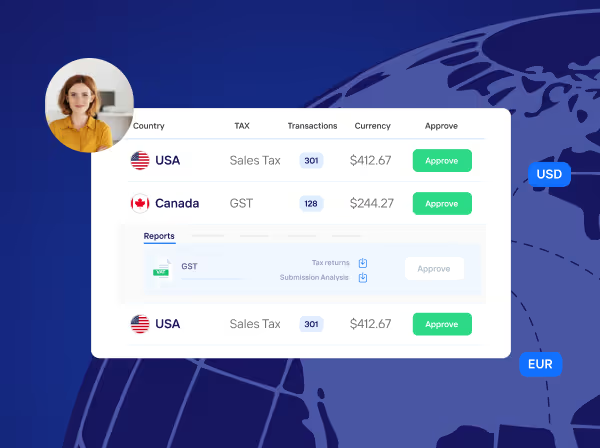Key takeaways
- You must register for VAT if your taxable turnover exceeds £90,000 in any rolling 12‑month period.
- Voluntary VAT registration may offer benefits like reclaiming VAT on expenses, even if you're below the threshold.
- Once registered, you must submit VAT returns and charge VAT on applicable sales using your VAT number.
If you're running a self-employed business or working as a sole trader in the UK, one question often arises: “Do I have to register for VAT?” This post will help you understand self-employed VAT, the self-employed VAT threshold, when VAT registration is mandatory, what being VAT registered means, and the implications for VAT returns, accounting periods, and more.
What is VAT (Value Added Tax)?
Value Added Tax, or VAT, is a tax added to most goods and services at each stage of production/distribution, collected by businesses that are VAT-registered. VAT-registered businesses must charge VAT on their sales (if those sales are not exempt), submit VAT returns, and may reclaim the VAT they paid on business purchases.
What is the self-employed VAT threshold?
- The VAT registration threshold is £90,000 in taxable turnover over any rolling 12‑month period. If your business’s taxable turnover exceeds that, you must register for VAT.
- That threshold came into effect in April 2024, raising the previous threshold (which was £85,000).
- “Taxable turnover” means the value of all sales of goods or services that are not VAT‑exempt or “out of scope”. It includes standard, reduced, and zero‐rated supplies. Exempt goods/services are not counted in that threshold calculation.

When do you have to register for VAT?
You must register for VAT in the UK if either:
- Your total taxable turnover for the last 12 months has exceeded £90,000.
- You expect your taxable turnover to go over £90,000 in the next 30 days alone.
You must apply within 30 days of the end of the month in which you exceeded the threshold or realised you’ll exceed it.
Once registered, you’ll receive a VAT number (also called a VAT registration number) and need to charge VAT on your VAT‐liable supplies.
What about voluntary registration?
Even if your business’s taxable turnover is below £90,000, you can choose to register voluntarily. There are pros and cons:
Pros:
- You can reclaim input VAT on purchases and expenses (goods, services, equipment) that you use for the business.
- It can make your business appear more established, perhaps improving relationships with other VAT‑registered firms.
Cons:
- You’ll need to charge VAT to your customers, which may make your prices less competitive if your customers are not themselves VAT registered.
- More paperwork: keeping detailed records, completing and filing regular VAT returns.
How to register for VAT
If you're self-employed and meet the criteria for VAT registration—either because you've exceeded the £90,000 VAT threshold or you’re choosing to register voluntarily—here’s how the process works:
1. Register online via HMRC
- Most self-employed individuals and sole traders register through the HMRC VAT registration portal.
2. Prepare the required information
Have the following details ready:
- Your National Insurance number
- Details about your business (business name, address, nature of activities)
- Your bank account details
- Your expected turnover
- Your business’s accounting period (e.g., monthly, quarterly)
3. Receive your VAT certificate
Once approved, you’ll get a VAT registration certificate—usually within 30 working days. This will confirm:
- Your VAT number
- The effective date of registration
- Your first VAT return due date
Note: You must start charging VAT from your effective date of registration, even if your certificate hasn’t arrived yet.
4. Set up digital VAT returns
Since the UK’s Making Tax Digital (MTD) rules apply to VAT, you must keep digital records and use MTD-compatible software (like Taxually) to submit your VAT returns.
What happens once you’re VAT registered?
Here are the key obligations and features once you become a VAT-registered trader or business:
- You’ll receive a VAT registration certificate that shows your VAT number and your effective date of registration.
- You’ll have to include VAT in your invoices for taxable goods/services. Depending on the rate (standard 20%, reduced, or zero), you’ll charge accordingly.
- You must keep proper VAT records (sales, purchases, VAT on those, etc.).
- You’ll submit a VAT return to HMRC, usually every three months (an accounting period). In the return, you declare how much VAT you charged your customers, how much VAT you paid to suppliers, and either pay the difference or claim back VAT.
What if you should have registered but didn’t?
If your taxable turnover exceeded the threshold and you did NOT register in time, there are several risks:
- HMRC may require you to backdate registration, meaning you owe VAT from the date you should have registered.
- Potential penalties and interest on late VAT owed.
Special situations & accounting schemes
- Simplified VAT schemes may be available depending on your turnover or business type, which alter how you calculate, reclaim, or pay VAT. They may simplify the accounting burden.
- If you take over a business, or if you’re based outside the UK but supply goods/services to the UK, there are additional triggers for VAT registration.
Do you have to register?
In short: yes, if your self-employed business’s taxable turnover exceeds £90,000 in any rolling 12 months, or if you expect to exceed that in the next 30 days. If you don’t hit that threshold, registration is optional (voluntary) but can have advantages. Once registered, you're legally a VAT-registered trader with duties: you must charge VAT, submit VAT returns, keep records, and get your VAT number sorted.
Conclusion
Whether you're close to the VAT threshold or thinking about voluntary VAT registration, it's essential to understand your obligations. Instead of managing everything manually, consider using a VAT expert or automated compliance software like Taxually. These tools help you:
- Track your turnover against the VAT threshold
- File accurate VAT returns on time
- Reduce admin through automation
- Stay compliant with Making Tax Digital and other VAT rules
Do you need help with your VAT compliance? Book a free call with one of our VAT experts to find bespoke solutions for your business, optimize your VAT costs, and reach millions of new potential customers with our automated VAT solutions.
Further reading
What Is a VAT Number? And Why Do You Need One?
Frequently asked questions
New Year's Day - 1/1/2024Memorial Day - 5/27/20244th of July - 7/4/2024Labor Day - 9/2/2024Thanksgiving Day - 11/28/2024Day after Thanksgiving - 11/29/2024Christmas Eve - 12/24/2024Christmas Day - 12/25/2024
Do self-employed people have to register for VAT?
Yes, if your taxable turnover exceeds £90,000 in any 12-month rolling period or if you expect it to exceed that in the next 30 days, VAT registration is mandatory.
Can I register for VAT voluntarily if I’m under the threshold?
Yes. Voluntary registration allows you to reclaim VAT on business expenses and may boost credibility—though it also adds admin and means you must charge VAT.
What happens after I register for VAT?
You’ll get a VAT number, must charge VAT on applicable sales, keep digital VAT records, and submit VAT returns—usually quarterly under Making Tax Digital rules.
How do I register for VAT as a sole trader or self-employed person?
You can register online via HMRC’s VAT registration portal, providing business details, expected turnover, and your accounting period. Once approved, you’ll receive your VAT certificate.
What if I don’t register in time?
HMRC can backdate your registration, demand payment of owed VAT, and apply penalties or interest. Always monitor your turnover and register promptly to avoid fines.


















